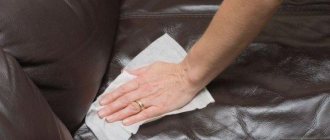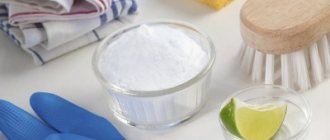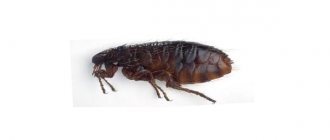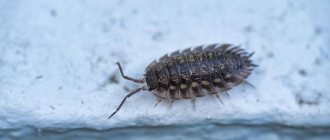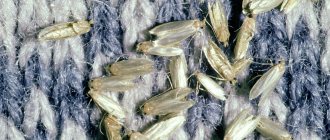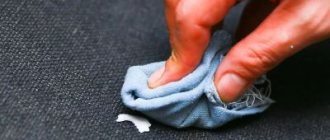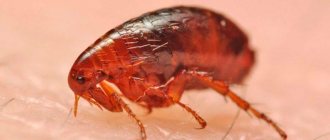How to remove fleas from a cat at home using folk remedies - this information is useful for every person who has a cat or dog to know. Fleas are the most common skin parasites that carry many dangerous diseases.
However, veterinary remedies do not always show sufficient effect and one has to resort to folk remedies. In addition, cats may have individual sensitivities to medications.
Folk remedies for fleas in cats
There are many ways to get rid of fleas on a cat using folk remedies. They are used if the animal is pregnant, there are small kittens in the house, or if there is intolerance to medications or allergic reactions. Folk remedies are characterized by low toxicity and cause minimal harm to animals. To get the maximum effect, you need to treat not only the cat, but also the bedding, carpets, houses, and toys. Including other animals in the house, even if they do not have parasites.
Regular brushing
Combing your pet if there are insects in its fur should be done daily. To do this, take a special furminator or a comb with small teeth. Before the procedure, the animal is treated with anti-flea agents. This will help remove weakened insects and their larvae.
First, the cat is combed against the grain, capturing the undercoat. Then the procedure is repeated in the direction of hair growth. It is also important to capture the undercoat, where parasites mainly hide. You can complete the procedure with the first stage of combing. The combed wool with insects and larvae is put into a separate bag, then burned or poured with boiling water or kerosene.
Sagebrush
Parasites do not like the smell of wormwood and begin to leave the treated pet and its surrounding objects. To prepare the solution, take 40 g of fresh crushed plant shoots and pour 0.5 liters of boiling water. Keep on high heat for 15 minutes, then close the container tightly with a lid. Leave for 6 hours, filter.
Soak the cat's fur in the solution and wrap it in a dry towel for 30 minutes. Then they take it to the bath, remove the fabric, and wash it with warm running water. Dry the wool with a new, clean towel. The course of treatment is once a day for a week.
Garlic
Garlic contains substances that repel blood-sucking insects. To prepare the solution, take 7 large crushed cloves and pour 0.5 liters of boiling water. Cover the container with a lid and leave for 12 hours in a warm, dark place. Then they filter and throw away the cake. Treat the pet by applying 6 drops of liquid from the withers to the middle of the back. It must get on the skin, so the fur is parted and the drops are rubbed in.
All other areas for application are excluded so that the cat cannot reach and lick them. If this happens, then garlic water can cause serious disruption to the gastrointestinal tract and poisoning. Treatment is carried out 2-3 times a day, in a course of 5 days. After the insects disappear, you can bathe your pet with soap to get rid of the unpleasant odor.
Pine sawdust
Pine sawdust is more helpful as a preventive remedy, but it can also be used for treatment. Pine needles have a specific smell that repels fleas. For treatment and prevention, they sew a new mattress for the bed, filling it with pine sawdust. To prevent them from disturbing the pet, they are covered with padding polyester from above and below.
Such a coniferous mattress will repel insects (including when the pet is resting) and prevent the laying of flea eggs. If the animal prefers several places for a bed (on a closet, on a windowsill, in a house), then mattresses with pine sawdust should be placed everywhere. The filler is changed as soon as the smell of pine needles disappears.
Saline solution
Saline solution is a safe, effective method of how to rid kittens of fleas using folk remedies. To treat your pet, a solution of warm water and salt is poured into a basin at the rate of 1 l/100 g. There should be enough of it so that the kitten is completely covered with water. Only the head remains above the surface. The animal is kept in the solution for 10 minutes. Then wash under warm water with baby soap and dry the wool.
Essential oils
Essential oils have a pungent odor that is unpleasant for insects and repels them. Volatile substances do not kill insects. But they are forced to leave their habitat. The oils will work as long as the aroma lasts. Therefore, you need to treat the room 2-3 times a day. Products should not be applied to the pet’s fur, as they can cause severe intoxication, loss of smell, and disturbances in the nervous system. The following oils are used to control fleas:
- wormwood;
- carnations;
- eucalyptus;
- anise;
- pine trees;
- oregano;
- rosemary;
- lavender;
- cedar;
- geraniums;
- peppermint.
For processing, concentrated oils are diluted in water, alcohol solution (at the rate of 50 ml/5 ml/5 drops). Then they spray the curtains, the pet’s house, carpets, the area around the tray, and bedding. For cleaning floors, prepare a separate solution (5 liters of water/25 drops of oil). First, the concentrate is diluted in a small bottle and shaken for 1-2 minutes. The oil should break into small particles. Then add water to the bucket and mix with it.
It is not recommended to use tea tree oil for treatment. It causes weakness, nausea, and vomiting in the cat. Dizziness and loss of coordination may occur.
Orange and lemon scents
Fleas cannot tolerate citrus scents. Oranges and lemons are most often used to get rid of insects. Take one of the fruits, finely chop it with the peel, pour in 0.5 liters of boiling water. Leave for 24 hours in a dark place. Strain, pour the product into a bottle with a spray bottle, and spray the animal.
You can dry citrus peels, grind them into powder and, if necessary, make a solution from it for processing. You can replace oranges with citric acid. It is dissolved in water, then sprayed on the pet (excluding the head).
Vinegar and alcohol
Vinegar helps kill fleas the first time. To prepare the solution, take cologne with a strong floral aroma, ammonia, and 9% table vinegar in equal proportions. The ingredients are mixed, then the pet is sprayed with a spray bottle. You need to make sure that the product does not get on the face, especially in the eyes and nose.
Wrap the cat in plastic wrap, excluding the head. Keep in this position for 10 minutes. Then the animal is released and bathed with flea shampoo. Dry with a towel or hairdryer. Then the weakened, dead parasites and their larvae are combed out.
Tar soap
To kill fleas, you can use solid or liquid tar soap. In the second case, it is more convenient to use. If only a bar is available, then soak it in warm water until a thick soap mass is obtained. Tar soap can be used to treat not only adult pets, but also kittens, starting from 5 weeks. Algorithm of actions on how to rid a cat of fleas using folk remedies:
- The animal is transferred to a large basin or bathtub. Carefully moisten the wool with warm water so that it is completely saturated and the skin is wet.
- Lather with soap without touching the head. Particular attention should be paid to the withers, belly and folds at the paws.
- Wrap the cat in a dry towel. Hold in your arms for 10-15 minutes, but no longer than 40.
- They take the pet to the bath. It is necessary to remove the towel there, as fleas will begin to jump out of the fabric and wool.
- Rinse off the soap thoroughly with warm water.
- Dry the animal with a clean, dry towel.
- Comb out the remains of fleas and their eggs.
If the insects have not disappeared after the first treatment, then repeat treatment is carried out after 4 days.
Ammonia
Fleas cannot tolerate the smell of ammonia. To treat the animal, prepare a solution of 1 liter of water with the addition of 10 drops of alcohol. The product is sprayed on the pet and the premises. Usually one time is enough, but if the insects have not disappeared, the procedure is repeated daily for a week.
Geranium decoction
The effect of geranium on fleas is similar to wormwood. Fleas are repelled by the strong smell. For processing, crushed leaves and stems of the plant are taken. Boil them for 20 minutes over low heat, cool, and filter. The product is generously soaked into the wool, right down to the skin. Wrap the animal in a warm cloth for 20 minutes. Then wash off the solution with warm water, dry with a hairdryer or clean towel, and comb out.
Hydrogen peroxide
For treatment, mix hydrogen peroxide with water (1:3). The liquid is soaked through the wool to the skin. Leave for 15 minutes, rinse with shampoo or clean water with the addition of vinegar. However, peroxide degrades the quality of the coat, so the method is not suitable for cats that are being prepared for exhibitions.
Boric acid
Boric acid quickly dissolves the chitinous shell of fleas. If a liquid ready-made water-based product is used, then it is mixed with water in equal proportions. Then soak the wool and keep it for 15 minutes. If powder is used, it is immediately poured into the wool. Keep for 15 minutes. After both methods, the cat needs to be washed with anti-flea shampoo, the hair dried, and combed. During processing, it is important to ensure that the liquid does not get on the mucous membranes, eyes, nose, or mouth.
Kerosene
Kerosene is a highly toxic product. It is used for processing only in combination with soap. The method is not suitable for kittens, pregnant, weakened, sick animals. Shampoo is made from kerosene by mixing 100 ml of liquid with 200 g of laundry soap shavings. The mixture is designed for 10 liters of hot water. Use as soon as the soap dissolves. You need to wash your pet with the product, but make sure that the shampoo does not get into the eyes, ears, or face. Then thoroughly wash off the soapy kerosene with running water.
Hellebore water
Hellebore tincture with alcohol is an effective remedy for fleas. The solution is sold in pharmacies ready-made. Soak a cotton swab in the product and soak the animal’s fur down to the skin with the liquid. Apply only to places inaccessible for licking, excluding areas with scratches and wounds. The solution is kept for 10 minutes. It is toxic, so then wash it off thoroughly with shampoo and warm running water.
Causes and signs of flea infestation in a domestic cat
Fleas are ectoparasites that can live on the skin of almost all mammals on Earth. These are blood-sucking insects with an average size of 2–3 millimeters. They can easily change victims, settling in the fur of a dog, rabbit, rat or cat. Fleas not only cause serious physical harm to animals, they are carriers of a large number of diseases. A pet can become infected while walking from other animals or people. Often a person himself brings flea eggs or adult fleas on clothes and shoes into the apartment.
Places where fleas accumulate is the hair on the withers, behind the ears, on the stomach and in the folds of the paws.
A cat infected with fleas is accompanied by the following signs:
- the animal constantly itches and bites itself;
- appetite noticeably decreases;
- the cat sleeps restlessly, twitches or jumps while sleeping;
- Numerous wounds may appear on the skin, which quickly dry out and become covered with crusts;
- During examination, flea waste products, including eggs, mucus, excrement or adult insects, can be found in the fur and skin.
How to enhance the effect of using folk remedies
If you make a garlic solution, then add 2 tsp to it to enhance the effect. brewer's yeast. Herbal solutions are not just watered, but soaked into the pet’s skin. If you use essential oils, it is recommended to mix several types at once.
When processing an animal, the entire room must be disinfected. Otherwise, fleas may temporarily find another habitat and then return to the pet’s fur. After treatment with products with strong odors, the room is ventilated at least after 8 hours.
Lemon acid
Citric acid is a natural flea killer, and lemons are full of it. To create a spray that will work on even sensitive skin, boil a lemon solution in water and let it sit overnight. You can then apply the mixture to your cat's fur using a spray bottle, but avoid contact with eyes, open wounds and scratches. A glass of lemon juice can also be used in the washing machine when you wash your cat's bedding to kill all the fleas.
Prevention
It is recommended to replace ordinary beds with mattresses with pine needles. They will repel fleas and prevent them from laying eggs. You can place fresh lemon and orange peels around the house. Or dry them, grind them into powder and add them to water before washing the floors. Cleaning can be done with bleach by pouring it into a bucket.
As a preventative measure, a collar is made by folding the cotton fabric several times. It is stitched, resulting in a tight belt. Velcro is attached to the ends. Then soak the collar in a solution of lavender, rosemary and alcohol oils, add a little catnip. Attach the belt to the pet's neck. The flea protection effect lasts for a month.
Due to low toxicity, the effectiveness of folk remedies is reduced compared to drugs. Therefore, it takes longer to kill fleas. After the destruction of parasites, it is necessary to repeat the treatment monthly for preventive purposes.
Brewer's yeast
Brewer's yeast is a natural flea repellent. Thiamine, which is part of yeast, is effective. The taste and smell of thiamine repel fleas. Brewer's yeast can be bought in almost any store. It is sold in liquid, powder and flake form. The powder form is best for flea control. You can mix it with your cat's food and use it as a supplement, but in this case the effect will not be achieved for at least a month. You can also use the yeast topically by mixing it with water and sprinkling it on your fur.
Oregano oil
Oregano oil contains a chemical called carvacrol. It is a natural antiseptic that kills both fleas and germs. Mix one teaspoon of oil with three teaspoons of olive oil and apply the resulting liquid to your cat's ears, skin and fur with a cotton ball.
Treating your cat with home remedies can be a simple but powerful way to rid your cat and your home of fleas. Using these medications will provide gentle and safe means of relief without the use of harsh, irritating chemicals.
Useful links:
What to do and how to get rid of it?
Alternatively, you can go to the pharmacy and buy flea medications for cats to treat fleas on your cat. However, pharmaceutical drugs carry the risk of additional problems. Your cat may be allergic to the drug and may not tolerate the treatment process well, since flea treatments are toxic.
A good alternative is folk remedies for fleas in cats. Unlike the pharmacy version, folk remedies do not destroy insects, but, for the most part, “scare them away”, creating an environment unfavorable for their rampant activity.
First of all, when you decide to remove fleas, you must approach the issue comprehensively. It is not enough to simply rid your pet of these insects. There are probably a lot of flea eggs already laid around your house, so over time the problem may return.
You will need to pay due attention to caring for your cat, as well as carry out a general cleaning of the room and take special care of your cat’s favorite resting place: be it its pad, house or just its favorite chair.
Symptoms
By paying proper attention to your cat, you can see these insects firsthand. For example, during stroking. However, it may not be possible to “catch a flea in the act.” Be careful. If your cat has fleas, then her behavior will definitely attract your attention with its unusualness.
Cats that have fleas have:
- The cat scratches itself more often than usual. When fleas bite a cat and walk on its skin, it reacts naturally. Scratching too often is dangerous for your pet - he can scratch his skin until it bleeds. These fleas are so annoying.
- The cat bites itself. This is a reaction similar to the one described above to the presence of fleas.
- The cat became irritable and nervous. The cat feels constant tension. And this can easily be read in her behavior. She becomes more aggressive and cannot sit quietly in one place.
- The cat wakes up abruptly and jumps in its sleep. Fleas bite very painfully. When this happens during sleep, the cat wakes up very abruptly and may even immediately jump to the side. By the way, cat fleas bite people, and one day you too may get it.
Article on the topic: How to find out if a cat has fleas
If you observe at least one of the above symptoms in your pet, then you can confidently assume that your cat has problems. And our master's duty is to help our beloved tailed friend get rid of this trouble.
Preventive measures
At the first signs of infestation, you need to take measures to help get rid of the flea infestation. This will be less dangerous for your pet than the presence of parasites that can infect dangerous diseases. To know that a cat is infected, you need to carefully monitor its behavior for a while.
This can be understood by the following signs:
- The cat constantly scratches and bites itself.
- Makes sudden movements in his sleep.
This behavior should not be ignored. First of all, you need to carefully examine your pet's skin. The presence of deep scratches and ulcers indicates the presence of insects. Moreover, if the wounds peel, then the disease is quite long-lasting. The insects themselves can be seen on the light fur. They have a black tint and are covered with a durable chitinous layer.
Most often, insects are found on the back and neck, where they are most difficult for the animal to reach. There they feed and reproduce. If you inspect these areas at least once a week, you can prevent the problem at the very beginning.
